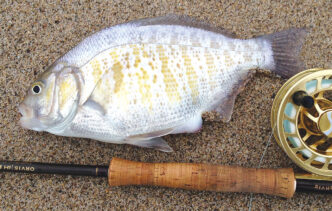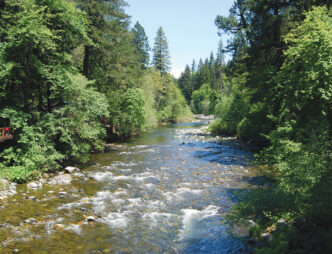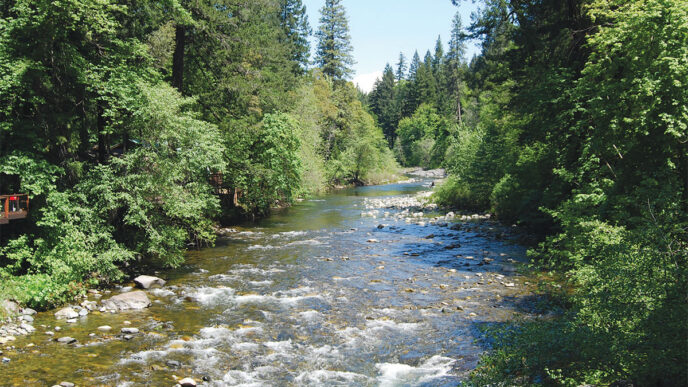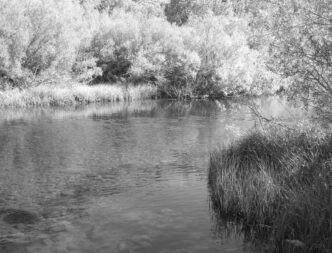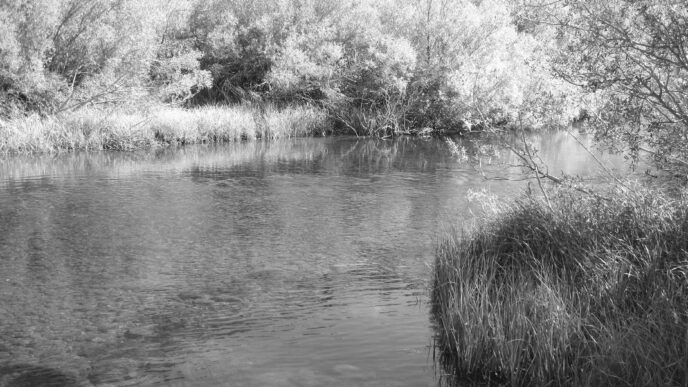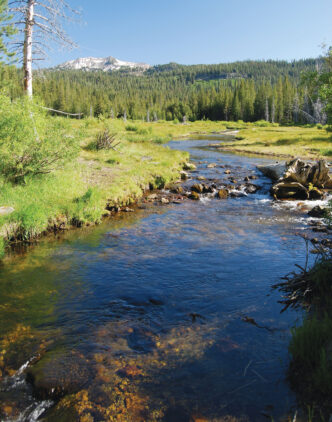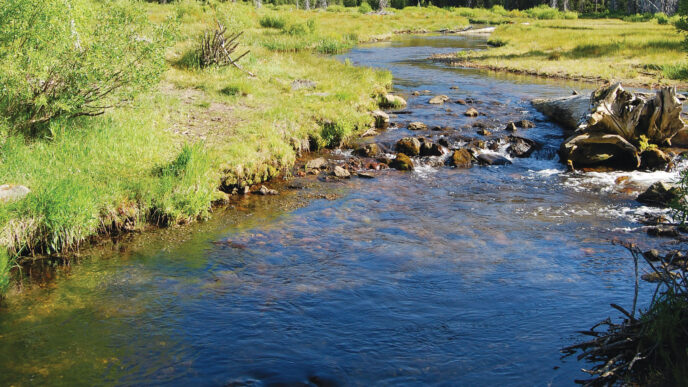There’s a classic stretch of sand along the coastline in Oxnard that boasts a star-studded history. Hollywood Beach earned its name in the 1920s when it was selected as the location for Paramount Studios’ blockbuster silent film The Sheik. Because of its sweeping sand dunes and its close proximity to Hollywood, this bit of California coastline served as the mystical Sahara Desert home to Sheik Ahmed Ben Hassan, played by Rudolph Valentino. Paramount added its magical touch, giving moviegoers a more exotic setting by transporting hundreds of fake palm trees to the site, turning a slice of Oxnard into a desert oasis.
It was on this strip of beach in 1921 where Valentino wooed costar Agnes Ayres among the dunes while the cameras rolled, filming the tempestuous movie. The Sheik is credited for launching Valentino’s career, making him a Hollywood matinee idol.
And while audiences were spellbound by the film, opportunistic land developers took note and worked behind the scenes to capitalize on the popularity of the oceanfront area. Sales of seaside lots began in 1924 in neighborhoods that would be known as the Silver Strand and Hollywood-by-the Sea developments. By 1927, more than a hundred cottages had sprouted in this coastal area.
It seems the magic of the Oxnard shoreline caught on with many others in Hollywood. Along with Valentino, some of the early film stars of the Golden Age of Hollywood, Clark Gable, Jane Russell, Carole Lombard, Nelson Eddy, and others were known to frequent the area or to own property outright there. For many in the film industry, it was a quiet escape from the Los Angeles scene.
Many years later, however, Hollywood Beach remains relatively unknown, compared with its more popular and pricier beachfront neighbors to the south and closer to Los Angeles: Venice, Santa Monica, and Malibu. If we fly fishers can take a lesson from Rudolph Valentino and friends, we can understand that such overlooked areas have their advantages — not for wooing movie stars among the dunes, these days, but for chasing surfperch among the waves.
Where to Fish
Hollywood Beach stretches just over a mile, from the beginning of Channel Islands Boulevard in the north to the entrance of Channel Islands Harbor to the south. Public parking is available at both ends of the beach. At the south end, along the entrance to the harbor, you’ll find a small parking lot at the north jetty. Bait fishers frequent this area, at the mouth of the harbor, while surf anglers take the walk across the sand, following the jetty to the shoreline about two hundred yards away. On a clear day in the distance, you’ll see the sliver of an island, Anacapa, about 16 nautical miles away, one of the five islands making up the Channel Islands.
There’s a small bay area at the southern end of Hollywood Beach protected by both the jetty and an offshore breakwater. It’s tempting water to fish, to be sure, and a stop along the way might pay off. I have taken perch there from time to time, and I’ve heard of halibut taken there, as well, though I’ve never had the pleasure. Still, I prefer to walk north along the beach, past the end of the breakwater to where the wave action is unobstructed. Once past the breakwater, there’s a lot of surf to explore. If you arrive at the beach from the north, there is public parking available off Channel Island Boulevard, just south of the Embassy Suites Hotel. This parking lot is larger than the one to the south, near the jetty, but you’re more apt to be fishing among sunbathers, beachcombers, and dog walkers. As a rule of thumb, I try to fish during the week, if I can, and leave the beach to the weekend crowd. But we can’t always pick our days to get away, and when the lure of surf fishing strikes, sometimes you just have to answer it. I have fished it several times on weekends. I just take more care to watch my back casts.
Fishing Structure
When fishing the surf, the word “structure” refers to depressions in the sand bottom caused by pounding wave action. Structure provides holding water for surfperch and other surf fish, and food often collects there. Some of these depressions are troughs and serve as channels along the bottom for fish to travel. These troughs and holes are great places to find fish. Many are not visible from shore, but lie farther out in deeper water. Casting and searching for holes is a big part of surf fishing.
I recently was part of a group of guys who gave a short presentation on surf fishing at a Santa Clarita Casting Club meeting. My part of the presentation was on reading the water, or as we know it in surffishing terms, looking for structure. Finding good structure isn’t always easy.
Over the years, I’ve explored many of the beaches in the Ventura area, from Port Hueneme in the south to Carpinteria State Beach in the north, but when looking for structure at the beach, sometimes I feel like a champ, and sometimes I feel like a chump. Unlike a trout stream, where I know where fish should be holding, it’s not always that easy to locate productive water when surf fishing.
My success rate has improved, though, because I look at the water with a more critical eye now. When exploring the surf, I like to target water that’s waist deep or deeper, if possible. Perch are looking for cover from above and will seek the deeper water in holes along the shore, which not only mitigate the turbulent wave action above, but, as noted, also collect food.
Sometimes water that deep can be very close to shore, and when that’s the case, and the water shows surface agitation, you have a prime target area for perch. This agitated water, or “nervous water,” as it’s sometimes called, is another tipoff to the surf angler that there are likely feeding fish in the zone.
As a rule of thumb, when I’m surf fishing, I like to give an area about 10 to 12 casts to see if the water will produce. If I don’t get any grabs, I typically move to another zone. The move may be as little as 5 to 10 feet before I continue to cast, or it may be a number of yards to another likely looking spot. If all else fails, and the perch aren’t cooperating, I might hop in the car and take a drive. There’s always another stretch of beach to try.

This was the case about a month ago. I had been surf fishing at Rincon Beach, about 25 miles north of Hollywood Beach, with a group of friends, good surf fishers, and we all had moderate success. The perch bite wasn’t red hot, but it was good enough to hold our interest and to keep our feet in the water for a few hours. When I left them and was driving back home to Oxnard, I thought I might as well give Hollywood Beach a try to see if the bite was any better there. I arrived just past low tide and didn’t expect much; the sun was bright, and all the indications were that the beach would be a bust. But as I was walking the waterside, it was immediately apparent that in comparison with Rincon on that day, here was better structure. Hollywood Beach had some nice holes on the northern end that really needed to be explored. As it turned out, the perch bite was great, and I soon went into double digits on the fish count. The bottom line is that finding good structure like this improves your chances of success in the surf. So keep moving until you find it.
It’s one thing to find good structure, though, and it ’s another to make sure you’re fishing it as well as you can. When casting into the surf, I try to time my casts so that my fly clears the heavy incoming waves and swells and settles in the calmer, softer water beyond. This allows the fly to settle on the bottom without being tossed too much in the waves, giving the perch a better chance to spot it and allowing them more time to move to it in calmer water.
Equipment
Over the years, I’ve used a number of rods of different lengths and weights in the surf, but have settled comfortably on a 10-foot 8-weight rod. Measured by the standards of the guys with whom I fish the surf, I’m the odd man out in this department. Most of them like a 6-weight or maybe a 7-weight, but I enjoy the longer casts I can lay out with the 8-weight, throwing a 250-grain integrated shootinghead line. The heavier rod delivers the sinking line effortlessly, and I know it gets to the bottom, where I want it, in a hurry. The heavier rod is admittedly overkill for perch, but it is nice to be holding it when I pick up a corbina, guitarfish, or a leopard shark. It makes playing them much easier. For a leader, I keep it simple. I haven’t seen an advantage in fishing a more expensive tapered leader for perch, so I use a length of about 4 feet of 8-pound-test fluorocarbon. It works just fine.
As for a reel, I use a large arbor reel with a decent drag. Sure, the drag isn’t important when playing perch, but again, it is nice have a reliable drag when I have hooked a larger fish.
My other gear is standard for most surf fly fishers. I like chest-high waders with surf booties, although in warmer weather, I sometimes wade wet. A stripping basket is a must for me, as well as a raincoat with several pockets to hold a few boxes of flies, elastic tape for my stripping finger (salt and sand can wear into finger joints rather quickly), and sunscreen. A hat and sunglasses also are standard. Because surfperch can be ravenous feeders and are capable of sucking a fly deep into their gullets, a pair of forceps also is a must for removing hooks.
Flies
I was instructing a group of fly tyers once and joked that it didn’t matter which surf perch fly they tied on when they were surf fishing as long as it was red, or orange, or a combination of the two, and it had barbell eyes to get it to the bottom fast. It was a bit of an overstatement, of course, but not by much. Maybe I’m closed-minded on the subject, or maybe I’m onto something here. Orange and red have worked very well for me over the years, and the addition of a set of weighted barbell eyes gets the fly to the bottom that much faster and keeps it there, where the perch are feeding.
One of the most popular flies in the Ventura area is the Checkerboard pattern tied by a well-known local guide, Lee Baerman. Flat out, Lee ties flies that work. I’ve used his Checkerboards in red and orange with great success over the years and have a box of them in my rain jacket whenever I hit the beach. But as a fly tyer, I like to play around at the vise and come up with my own patterns. For me, that’s a big part of the fun of the fly-tying and flyfishing experience.
I heard earlier this year from a friend that the perch were keying in on red flies. The news came as no big surprise, really, and I took this as a challenge to see if I could come up with a surf fly to top all surf flies — a classic, like the Adams is to dry-fly trout fishing. Well, after some trial and error, I have to report that I didn’t. But what I did come up with is a pretty productive surf fly to add to my collection. I named it the Hollywood Red, after its home beach, where it was tested and proven to be a good fly, attracting a whole lot of perch.
It’s a simple enough fly to tie. The only tricky part is to prevent the barbell eyes from rotating on the shaft of the hook, a common problem on flies that get bounced and churned up in the surf. I’ve pretty much remedied the problem by coating the wraps in epoxy, but I’m still searching for a foolproof solution to the puzzle. Once the eyes are set in place, this is a very simple fly to tie, as you’ll discover when you read the instructions here.
Another fly I like to use at Hollywood Beach and in the Ventura area in general I’ve named the Mrs. Bates. I first started using this fly at Rincon Beach and along Santa Claus Lane in Carpinteria a few years ago and have had good success with it. I named it Mrs. Bates after the Bates Road exit off Highway 101 that leads to Rincon Beach. I know the orange of the body is a good attractor, possibly fooling the perch into associating it with the roe sack of the Pacific mole crab. As with the Hollywood Red, it is likewise an easy pattern to tie.
Hollywood beach has proved it can be magical in many ways. Paramount Studios had it right all those years ago when Rudolph Valentino stepped onto the shores of Oxnard. It was a special stretch of sand then, and it remains so today. The glitter of Hollywood and the allure it held then for the celebrities has faded, perhaps, but for the surf fly fisher, it remains a popular, lovely shoreline to explore with rod and reel.
The Hollywood Red
Hook: Saltwater Gamakatsu SS15, size 6, or Daiichi Xpoint X452, size 6
Thread: Red UTC Ultra Thread, 140 denier
Body: Red Wapsi medium Palmer Chenille
Eyes: Your favorite weighted barbell eyes are fine. Here, I’ve used 3/16-inch Spirit River Real Eyes Plus in nickel and yellow, but I like to mix up what I use a bit.

Step 1. Start the thread. I like to wind the thread about halfway down the shank of the hook and build it up a bit. About one end-to-end barbell length behind the hook eye, tightly figure-eight the thread around the eyes and wind the thread behind the eyes to form a backstop for them.
Step 2. Wind the thread forward in front of the eyes to form a “rat nose.”
Step 3. To secure the eyes and to help prevent them from pivoting on the shank in the surf, coat around the head, eyes, and “nose” and down the thread base of the hook with EasyCast Clear Casting Epoxy. Allow the epoxy to set for about 24 hours.
Step 4. Tie a four-inch strand of red medium Palmer Chenille to the bend of the hook. Warp the wrap the chenille forward, and as you do, pull the long strands of the chenille back toward the bend. Finishing wrapping the chenille behind the eyes. I like to wrap this rather sparsely; about 10 wraps along the shank should do it.
Step 5. Whip finish securely behind the eyes and apply cyanoacrylate glue (superglue) to these wraps.
The Mrs. Bates
Hook: Saltwater Gamakatsu SS15, size 6, or Daiichi Xpoint X452, size 6
Thread: Fluorescent orange UTC Ultra Thread, 210 denier
Body: Orange Wapsi medium Palmer Chenille and pearl Wapsi small Palmer Chenille
Eyes: 3/16-inch Spirit River Real Eyes Plus in nickel/yellow or nickel/pearl
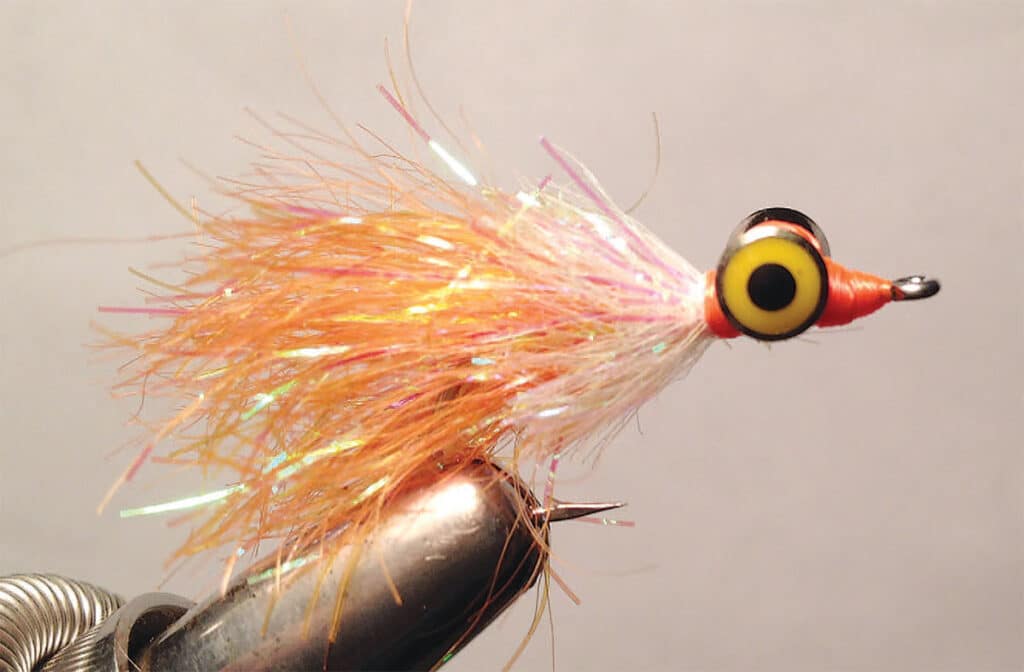
Step 1. Start the thread. Wind the thread about halfway down the shank of the hook and build it up a bit. About one end-to-end barbell length behind the hook eye, tightly figure-eight the thread around the eyes and wind the thread behind the eyes to form a backstop for them.
Step 2. Wind the thread forward in front of the eyes to form a “rat nose.”
Step 3. To secure the eyes and to help prevent them from pivoting on the shank in the surf, coat around the head, eyes, and “nose: and down the thread base of the hook with EasyCast Clear Casting Epoxy. Allow the epoxy to set for about 24 hours.
Step 4. Tie a three-to-four-inch strand of orange chenille to the bend of the hook. Wrap the chenille forward, and as you do, pull the long strands of the chenille back toward the bend. finishing behind the eyes, but leaving room for about four wraps of small pearl chenille.
Step 5. Tie in a two-to-three-inch strand of small pearl chenille in front of the orange chenille and wrap it forward against the eyes, forming a skirt or apron.
Step 6. Whip finish behind the eyes and apply cyanoacrylate glue to these wraps.



